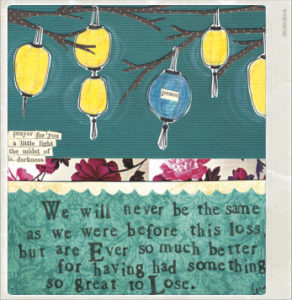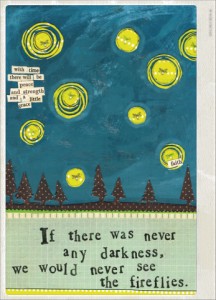Condolence and Sympathy are parallel formations going back to Latin condolere and Greek sumpatheia, meaning ‘together-suffering .’ Together Suffering.

At this point I could just stop writing. Because this phrase “Together Suffering” captures what writing sympathy cards is all about. If we can keep this as our focus—suffering together—then perhaps it will help us get over that awkwardness of not knowing what to say or how to say it.
It is hard to write this kind of card. I know that I have stared at a blank sympathy card for some time before actually putting pen to paper. Not a bad thing. Gives one time to contemplate what words to write. Just don’t put it back in the drawer due to your own discomfort. Remember, it might be difficult to write the card, but not has hard as loosing someone you love.

I am a “less is more” kinda gal but I also feel that story telling is a powerful way for healing to begin. Memories that you have of that person may be different or unknown to the family members but can really resonate and mean so much. In the Globe and Mail newspaper, March 3, 2013 Fiona Gold Kroll shares her story with grief. Do be prepared. Your eyes may well up with tears. But what I like about her story is that it is raw but not without beauty and hope.
For those of you, who like me, can’t get enough of these cards do pay a visit to Curly Girl Designs. Outstanding work.
Suggestions on how to write a sympathy card :
* share a memory or something you remember and include it in the sympathy card
* send a note a few months afterwards; when life goes back to normal for everyone else
* remember that occasions like Christmas, Birthdays, special holidays are particularly difficult
* if you live close enough show up with a meal that can be frozen
* make a phone call and take them out for coffee later; loneliness is lonely.